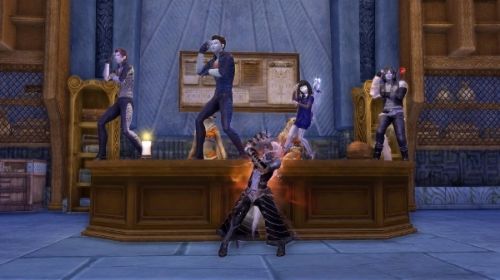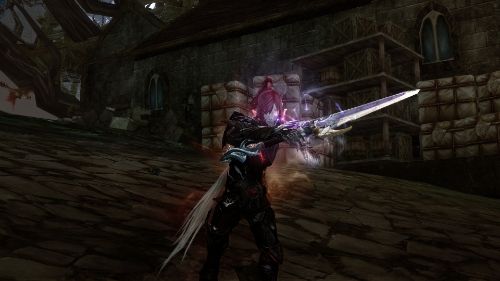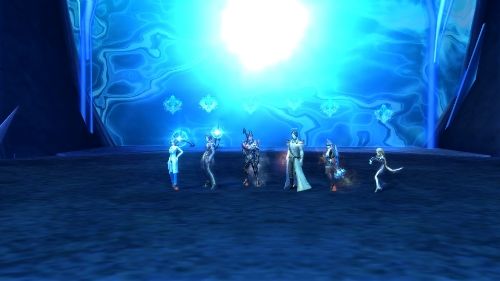So...it sounded like gunfire and smelled like burning happiness when my beloved computer exploded. It was definitely a worst case scenario, I had to take a moment to let it sink in that I no longer had a nice computer. I woefully tossed and turned for a few moments before finally coming to the conclusion that this was, in fact, not the end of the world.
It was however a pretty significant change of pace for me, someone who is online for a majority of their free time generally doesn't have a whole lot of backup plans when your source of fun/work/communication just up and explodes. But all was not lost, I dusted off my now quite old backup PC that hadn't seen the light of day since I got my new rig and cleaned up the myriad of viruses and old programs.
So all was not lost but it's certainly a different level of gaming and whatnot as I'm using a machine that is approaching its 10th birthday...but anyway.
The computer explosion has meant no more Aion for me as I simply can't run it on the level I'm used to and PvP is an absolute nightmare (I'm a ping/fps brat when it comes to Aion, don't judge!). So, I've had to seek other entertainment while my computer is being fixed up. I found this in Warframe, a new free-to-play third person shooter. It's fairly less demanding than a full fledged MMO but it has a lot to offer gamers on a budget or those who don't have amazing computer setups.
I'm honestly not sure if I'll be able to get my pre-4.0 Aion project off the ground since I can't even access most of the content that was supposed to end up in there (Back up your projects, don't suffer like me!) since it...well it exploded.
I'll be back in the swing of things sometime next week when my computer gets fixed! Hopefully before 4.0 launches!
There might be a brief Warframe post in the next few days...I'm hesitant to post anything concrete about it since they're still developing and changing the game on a large scale while it's in beta. We shall see!
Thanks for reading!
-Fest
It was however a pretty significant change of pace for me, someone who is online for a majority of their free time generally doesn't have a whole lot of backup plans when your source of fun/work/communication just up and explodes. But all was not lost, I dusted off my now quite old backup PC that hadn't seen the light of day since I got my new rig and cleaned up the myriad of viruses and old programs.
So all was not lost but it's certainly a different level of gaming and whatnot as I'm using a machine that is approaching its 10th birthday...but anyway.
The computer explosion has meant no more Aion for me as I simply can't run it on the level I'm used to and PvP is an absolute nightmare (I'm a ping/fps brat when it comes to Aion, don't judge!). So, I've had to seek other entertainment while my computer is being fixed up. I found this in Warframe, a new free-to-play third person shooter. It's fairly less demanding than a full fledged MMO but it has a lot to offer gamers on a budget or those who don't have amazing computer setups.
I'm honestly not sure if I'll be able to get my pre-4.0 Aion project off the ground since I can't even access most of the content that was supposed to end up in there (Back up your projects, don't suffer like me!) since it...well it exploded.
I'll be back in the swing of things sometime next week when my computer gets fixed! Hopefully before 4.0 launches!
There might be a brief Warframe post in the next few days...I'm hesitant to post anything concrete about it since they're still developing and changing the game on a large scale while it's in beta. We shall see!
Thanks for reading!
-Fest


















